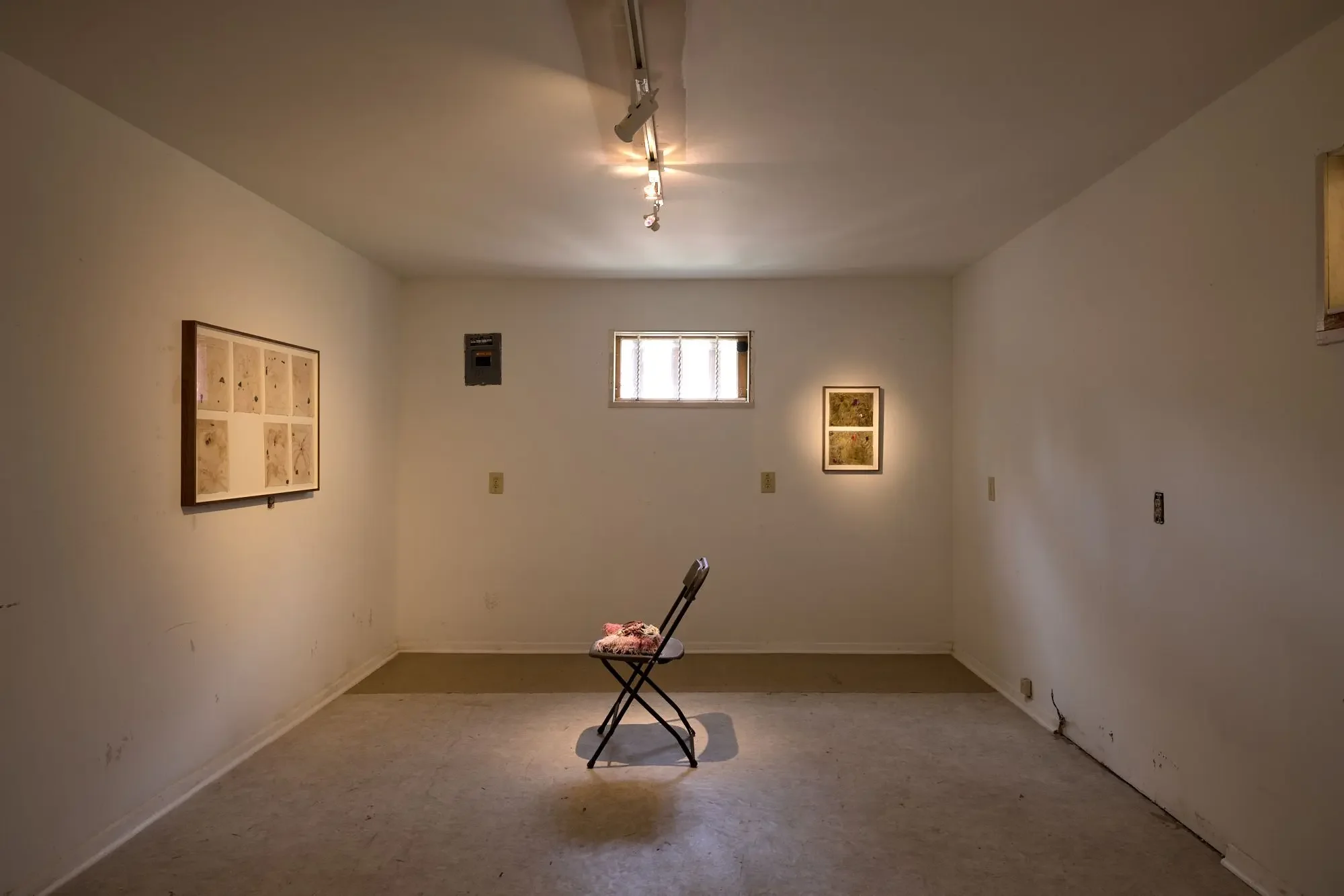Leaf 3
Seven Spider Bagatelles
[Las Palomas : Water Street Shed] [In Admiration of Anton Webern]
After two hours of fruitless questing, I stumbled on the minimal Parking Lot across from Mille’s French Restaurant. This vacancy faced a non-descript “shed”—padlock luckily hanging open--nestled against the rear of an adobe enclosure housing a small Historic Inn. While only a four-block walking distance from the plaza, the Las Palomas area is so quietly unassertive that any dilapidated building fades into the cement.
Apparently, once upon a time, this small outpost functioned as a community pharmacy :T he B Ruppe Drugstore in Albuquerque [founded in 1883 by a German immigrant] was subsequently moved many times to be reborn in 1985 as a yerberia only to close, finally, in 2017. The memory of that prior existence easily escapes the visitor when first opening the door into two, low, white-washed, almost empty rooms in which everything animate appears stilled. No lingering herbal scent or pulverizing sound. Nor is it clear what constitutes installation or remains. Two dry-cleaner wire hangers are suspended against smudged walls and a worn jacket hung akimbo, slides dangerously downward. Then a solitary chair hoves into view. Set before the slight swell of a platform, and centered on the back window, its rungs carry a woven metallic shawl.
Our eyes expectantly lift only to encounter yellowish stained papers tinted with printer’s and blackberry ink, Oregon grape seeds, jellied Crisco, oil pigments, a tangle of hair, typewriter script, and small roundels cut from magazines. All, seemingly haphazardly, are tacked onto bare walls. After a while, this sensation of being adrift solidifies into a suite of seven drawings created by the evocatively-named Gabrielle l’Hirondelle [the soaring swallow]. What first looked tangential --leftover items from the building’s former life-- crystallize into the acrobatics of concrete poetry.
The Spider Play slowly emerges as a mixed graphic progression, one that ebbs and flows across surfaces at different heights. Each drawing becomes a balletic act where flightly spiders, formed from slender poetic skeins, doze or dangle as real spiders might, within a long- abandoned space. The visitor moves, as they move, gropingly, alone, or, rarely, in a group, shifting positions from dormant to giddy according to whether it is night or day.
Act I occurs under silvery cutout stars and patches of black night. All is quiet beneath the spider wall. An upside-down spider [with eight typescript iconic legs] lazily rocks on an arc of thread. They, and we, move and flow randomly through twenty-four hours beginning with the brown sticky soft eggs mouthing hungrily: “we want, we want” into a violet sky [Act 3]. Two white interlaced cleaning -establishment wire hangers, slightly askew, form “The Legs,” [Act 2] a found sculpture parodically mirroring the painted spider on the facing wall. [7] Enigmatically, the tiny text at the bottom of this drawing challenges the visual claims of the artist’s representation: declaring that the miniscule surrounding items are gigantic in proportion to the, in fact, huge depicted spider. [Act 4] In the hallucinatory “Dream”, a trembling spider rhythmically enacts a polyphony of fear that “something is coming.” [Act 5] When weak sunlight arrives [6] eight spiders with “legs like pencil lines” dilate and spread over paper that is dawn- stained from tea to rose.
L’Hirondelle wittily deconstructs the supposedly collaborative life of nature’s web into the literal rise and fall of individuals. She gives us a glimpse into our animal character—in a novel mode—from pushy infants to playful pranksters to terrifying beasts in the jungle. Not for her the unrelenting coordination of the network, but its frisky daily users with their aerial combinatorics, their jaunty movements, their spinning temperament.

